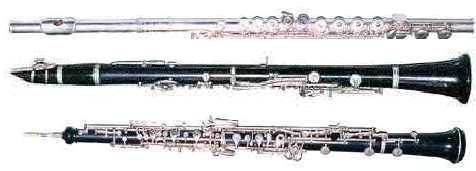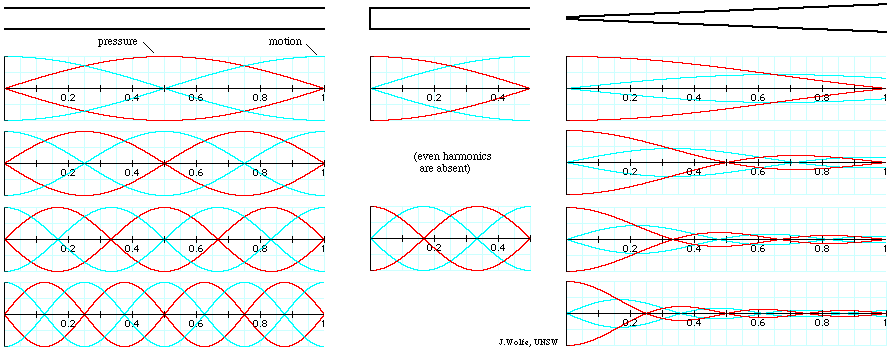Closed end
Open end
Closed end is displacement node and pressure antinode
Closed end is pressure node and displacement antinode
Displacement view
Pressure view
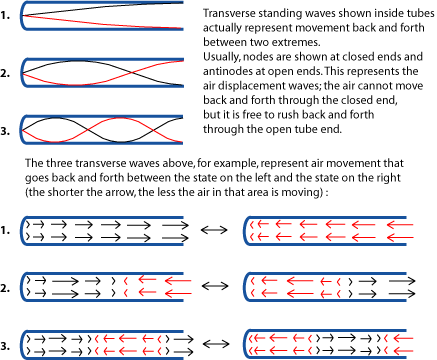
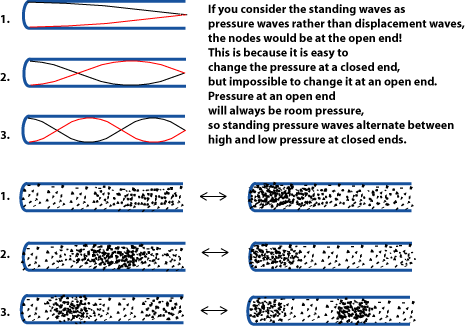
| Kundts tube | Rubens tube |
Closed end |
Open end |
|
Can't be any displacement,
so displacement wave has a node. But any pressure
in the wave is freely matched by reaction force from the wall
Closed end is displacement node and pressure antinode |
Pressure must match outside pressure and can't
fluctuate, so pressure wave has a node. Closed end is pressure node and displacement antinode |
Displacement view |
Pressure view |
| Displacement wave is fixed at closed end and free at open end | Pressure wave is fee at closed end and fixed at open end |

|

|
| "Flutes" are musical instruments which are pipes with both ends open . Other examples are, e.g, some organs | "Clarinets" are musical instruments which are pipes with one open and one closed ends |
 |
 |
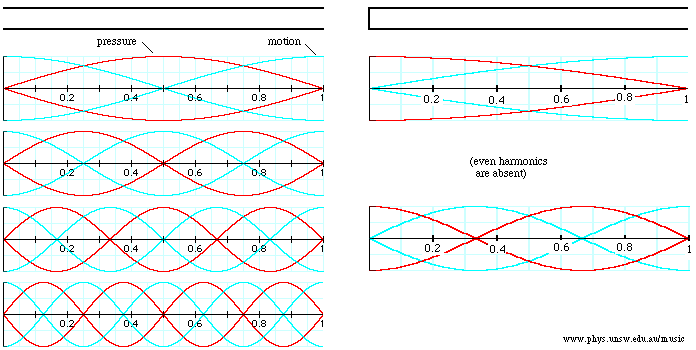 |
|
|
"Flutes" normal modes are indentical to a string
with fixed ends. λ = 2 L, 2L/2, 2L/3, ... 2L/n |
"Clarinets" are different, as a string with one fixed and one
free end
|
